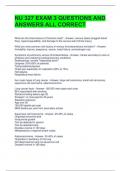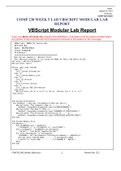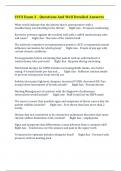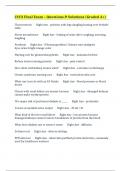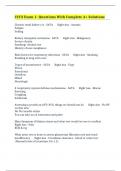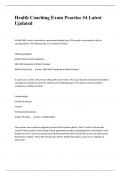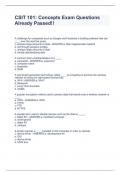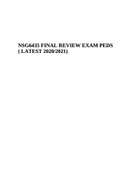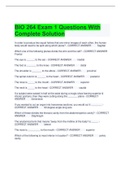Exam (elaborations)
NU 327 EXAM 3 QUESTIONS AND ANSWERS ALL CORRECT
- Course
- Institution
NU 327 EXAM 3 QUESTIONS AND ANSWERS ALL CORRECT What are the three factors of Virchow's triad? - Answer- venous stasis (sluggish blood flow), hypercoagulability, and damage to the venous wall (intimal injury). What are most common risk factors of venous thromboembolus formation? - Answer- Immo...
[Show more]
